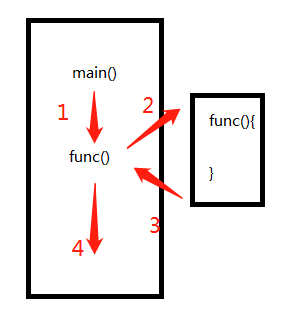C++学习笔记(5) C语言与C++的区别
两者关系:
-
C++是C的一些扩充
-
头文件
C语言 C++ stido.h iostream math.h cmath string.h cstring sdilib.h cstdlib 。。。 -
命名空间
-
重复的标识符
using namespace std; //使用std命名空间 std :: cout << .... 注明cout来自于哪个命名空间cout cin endl 都是在 std 的命名空间
-
-
输入输出iostream
- printf() scanf()
- cout << //输出
- cin << //输入
- endl << //换行
- ends <<
-
基本数据类型
-
几乎一样
-
int short char float double usigned long
-
-
C++新增布尔变量
-
true false -
实际运行是 true当做1来使用,false 当做 0
-
让代码看上去更直观,while(true)
-
-
-
结构体
在 C 中定义一个结构体,类型的struct不能省略,C++中可以省略
struct Stu{ int m; int age; }; Stu s1; //c++风格 struct Stu s1; //c风格 -
强制类型转换
double a = 3.8; double b = 6.6; int c = 30; int d; d = c + (int)(a + b); //c风格 d = c + int(a + b); //c++风格 -
条件运算符 ? :
(a<b)? a:b; //C风格,只能去使用返回值 本质:变量 ((a<b)? a:b )= 20; //c++风格,可以进行赋值 本质:内存 -
for循环
int i; for(int i = 0;i<10;i++)//c中必须先定义 for(int i = 0;i<10;i++)//C++中在第一个表达式中定义,节约内存,程序结束释放 -
作用域运算符 ::
-
区分全局和局部(变量与函数)
int a = 20; int main(){ int a = 10; cout << a << endl; cout <<::a << endl; while(1); return 0; }
-
类的作用域
男人 吃饭 eat()
女人 吃饭 eat()
cat 吃饭 eat()
-
命名空间
using namespace std;
-
-
动态内存分配
编程语言 开辟内存 释放内存 方式 C malloc free 函数 C++ new new[] delete delete[] 运算符 int main(){ int *p1,*p2,*p3; p1 = new int;//int 4B内存空间 p2 = new int[5];//指向 5个 int 数组首地址,20B p3 = new int(5);//指向 int 4B空间,初始化为5 delete p1; delete[] p2; //释放首地址为p2的数组内存段 delete p3; while(1); return 0; } -
变量的引用&(important)
void swap(int a,int b){//直接赋值 int t; t = a; a = b; b = t; } void swap(int* a,int* b){//传入指针变量 int t; t = *a; *a = *b; *b = t; } void swap(int& a,int& b){//变量的引用,给内存段取别名 int t; t = a; a = b; b = t; } int main(){ int x = 10; int y = 20; swap(x,y);//直接赋值,只是把实际参数传递给形式参数,交换的是形式参数 cout << x << endl << y<<endl; swap(&x,&y);//访问内存,交换地址绑定的内存段 cout << x << endl << y<<endl; swap(x,y);//引用,不会新开辟内存空间,共享一个内存 int& c=x;//c和x共享一个内存段,等价 cout << x << endl << y<<endl; while(1); return 0; } -
内置函数内联
在调用函数的时候,需要一定时间或者空间开销。(跳转)

C语言:宏函数
#define Fun(a,b) (a*b + a/b) //预处理i--汇编s--编译obj--连接exe int main(){ int x = 10; int y = 20; Fun(x,y);//简单代码替换 }C++:内置函数 (内联)
关键字 inline:编译的过程中,将所调用的函数代码直接嵌入到主调函数中
注意:
-
内置函数可以节省运行时间,增加目标代码的长度
-
是使用内置函数时,5行以内,经常出现的函数
-
不能包含负责的语句,循环,switch
-
inline 比较灵活,并不是一个指令性的关键字
inline 只是一个建议,编译器采纳与否与程序员无关
inline int Max(int a,int b,int c){ if (a < b) a =b; if ( a< c) a = c; return a; } int main(){ int x = 10; int y = 20; int z = 18; max = Max(x,y); //本质也是进行替换 return 0; } -
-
带默认参数的函数
- 声明时给形式参数赋值,调用时可以不用赋值
- 调用函数是,实际参数个数 = 形式参数个数 - 默认参数个数
- 形式参数有一些初始化,一些不初始化,需要初始化的 放在参数列表 右边
int Max(int a = 10,int b = 15,int c=18);//声明时赋值 int main(){ cout << Max(); int x= 50;int y = 40;int z =80; cout << Max(x); cout << Max(x,y); cout << Max(x,y,z); while(1); return 0; } int Max(int a,int b,int c){//定义不用赋值 if (a < b) a =b; if (a < c) a = c; return a; } -
函数的重载
-
函数名一样,参数列表个数、类型、顺序不一样
-
在调用的时候,编译器会自动选择合适的函数
-
返回值类型并不能决定是不是函数重载
-
不能有歧义,函数重载不能与带默认参数的函数起冲突
-
运算符重载
& 取地址运算符、按位与、引用
class complex{ }; complex operator +(complex& c1 ,complex &c2)
int Max(int a,int b,int c); float Max(float a,float b,float c); double Max(double a,double b,double c); int main(){ float a = 50;float b = 40;float c =80; cout << Max(a,b,c); while(1); return 0; } int Max(int a,int b,int c){//定义不用赋值 if (a < b) a =b; if ( a< c) a = c; return a; } int Max(int a,int b,int c){} int Max(int a,int b,int c){} -
-
函数模板(参数化思想)
-
函数模板,模板函数
- 建立一个通用的函数,函数的类型和参数的类型可以不指定
- 凡是函数体相同的多个函数,都可以使用函数模板
-
类模板,模板类
参数化
- 软件开发过程中必须要掌握的一种思想,他提出将各种相同的概念用参数来代替使用,将具体的东西带入这个参数即可
#include <iostream> using namespace std; //函数模板 tempalte <class T1>;//tempalte <typename T> tempalte <typename T2>;//tempalte <class T> T1 Max(T1 a,T2 b,T1 c);//流入三个接口 int main(){//存在重定义 float a = 50.f;double b = 40.2;float c =80.f; cout << Max(a,b,c); int a = 50;float b = 40.2f;int c =80; cout << Max(a,b,c); double a = 50.0;int b = 40;double c =80.0; cout << Max(a,b,c); while(1); return 0; } tempalte <class T> T1 Max(T1 a,T2 b,T1 c){//定义不用赋值 if (a < b) a =b; if ( a< c) a = c; return a; } -
-